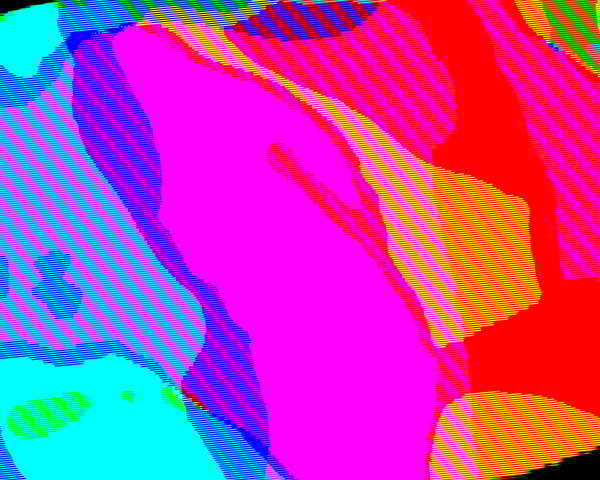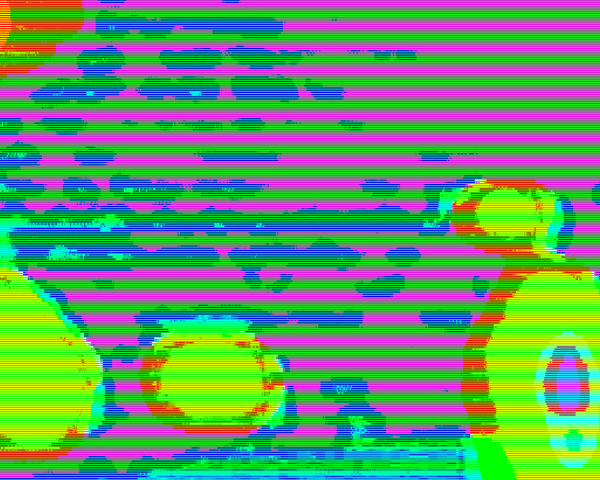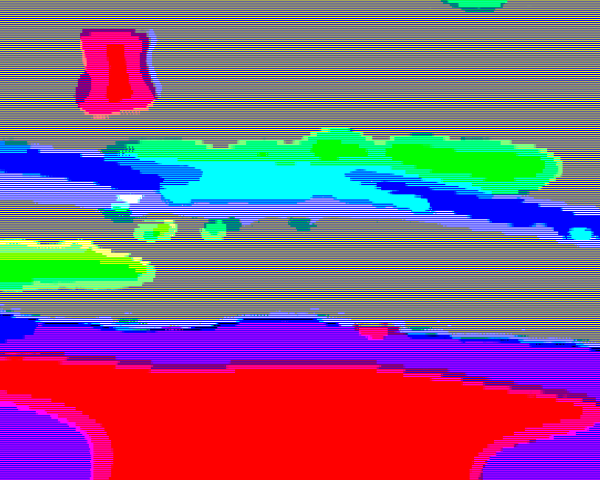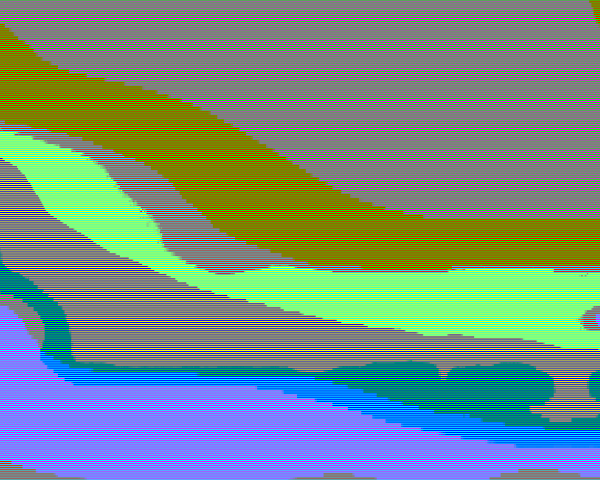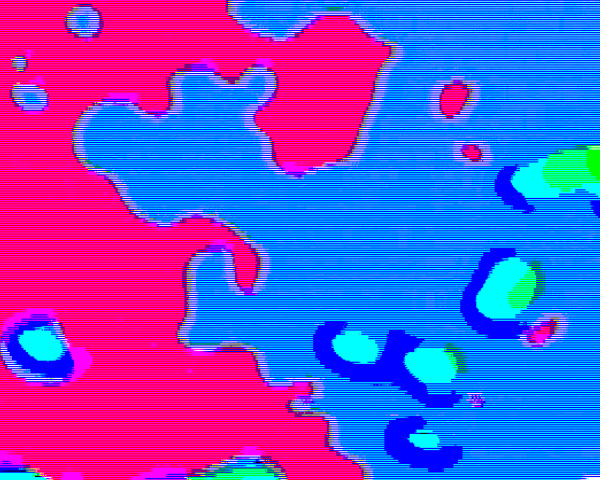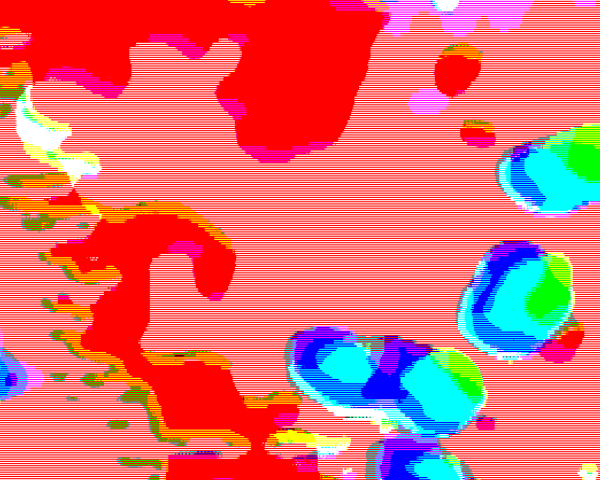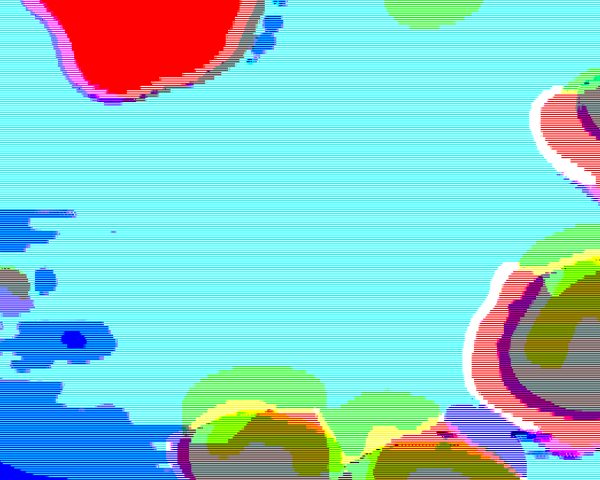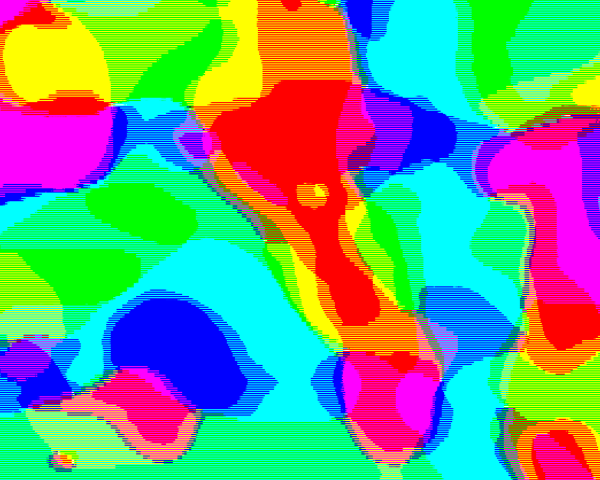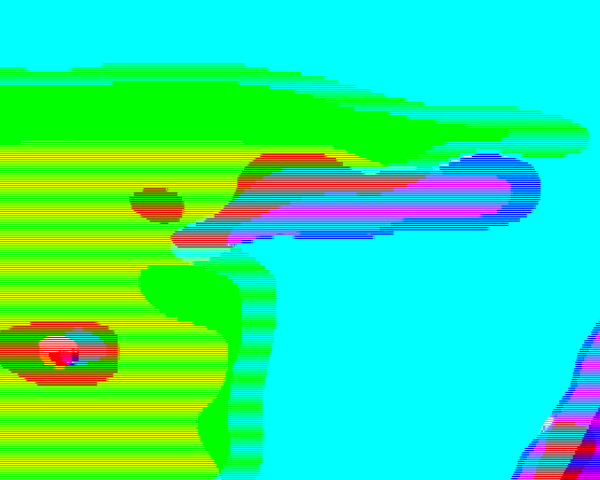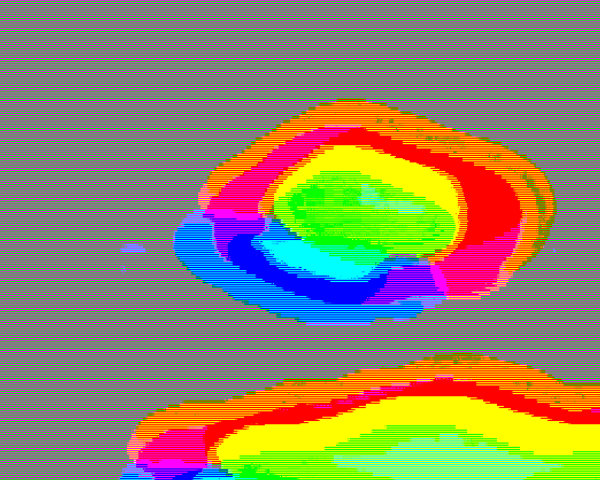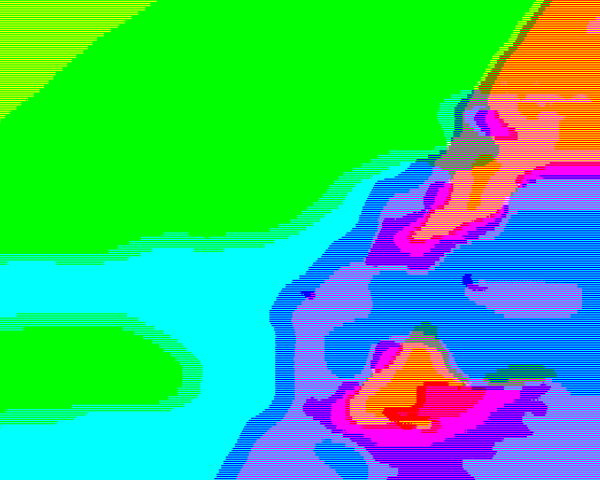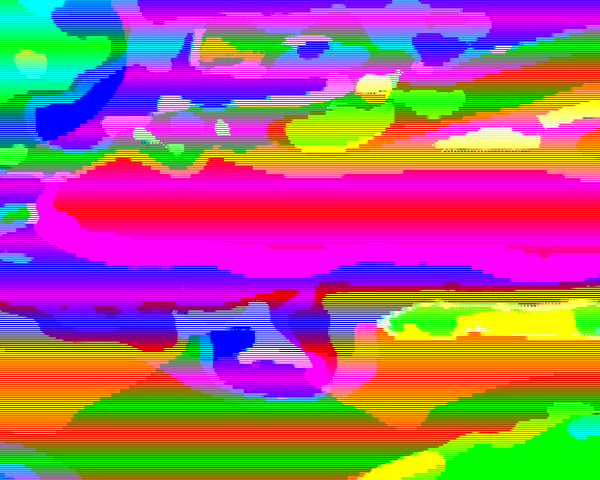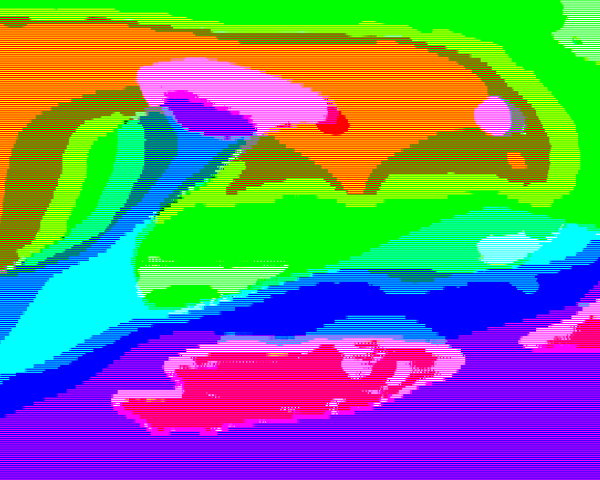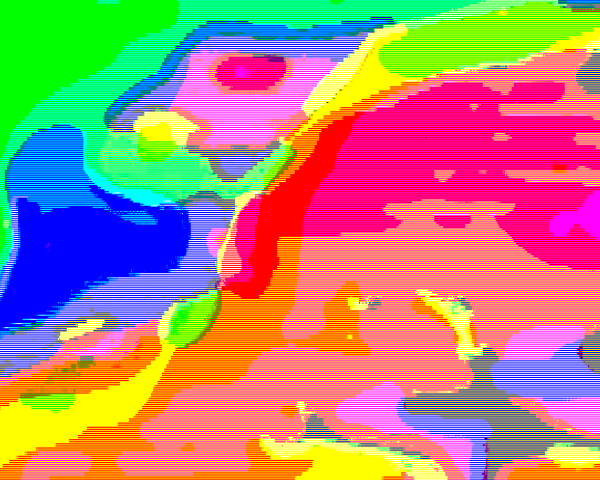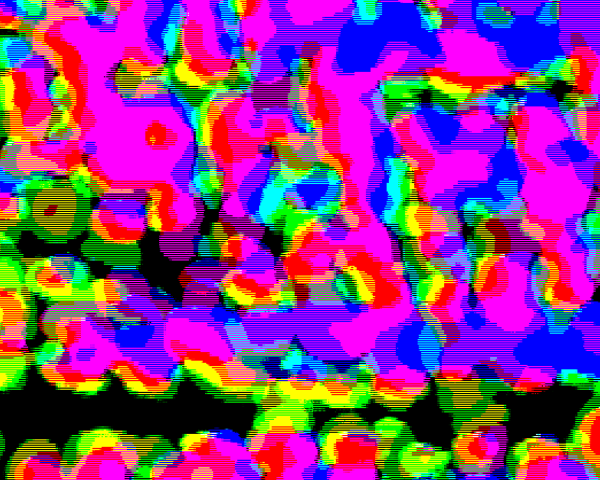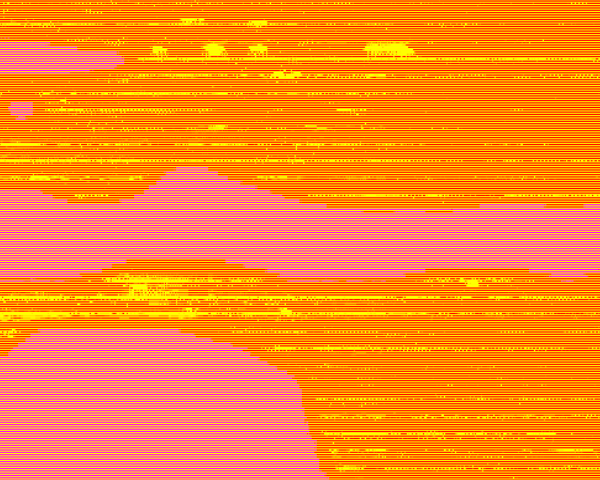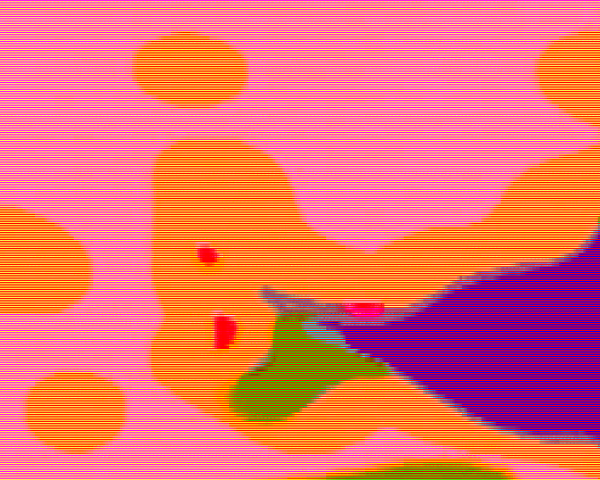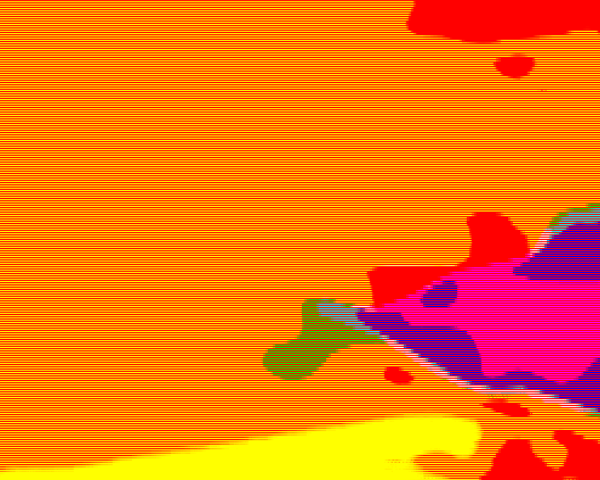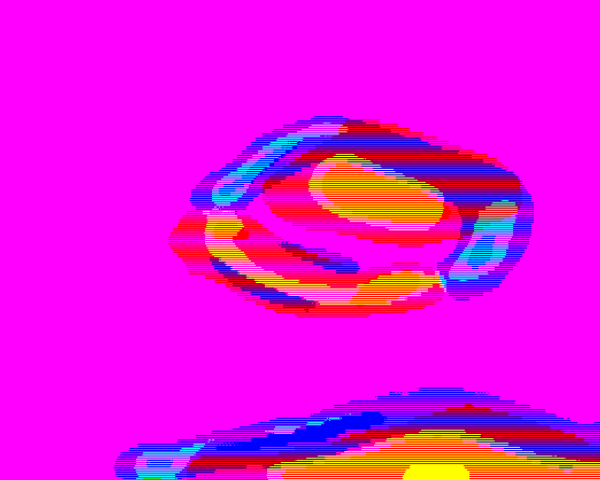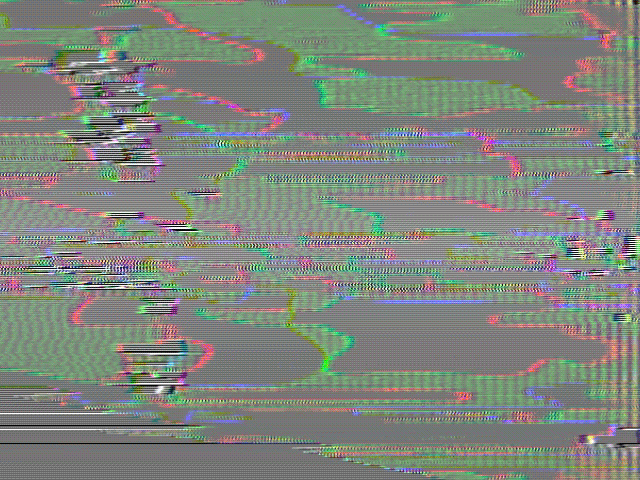 We have been working to get the bot-invested http://gli.tc/h/wiki/ into shape. You are now more welcome than ever.
We have been working to get the bot-invested http://gli.tc/h/wiki/ into shape. You are now more welcome than ever. 3/18/2012
Let the whole outside world consist of a long paper tape ...Or: the http://gli.tc/h/wiki/ is back!
 We have been working to get the bot-invested http://gli.tc/h/wiki/ into shape. You are now more welcome than ever.
We have been working to get the bot-invested http://gli.tc/h/wiki/ into shape. You are now more welcome than ever. My photo for the Nova 2012 Communication campaign
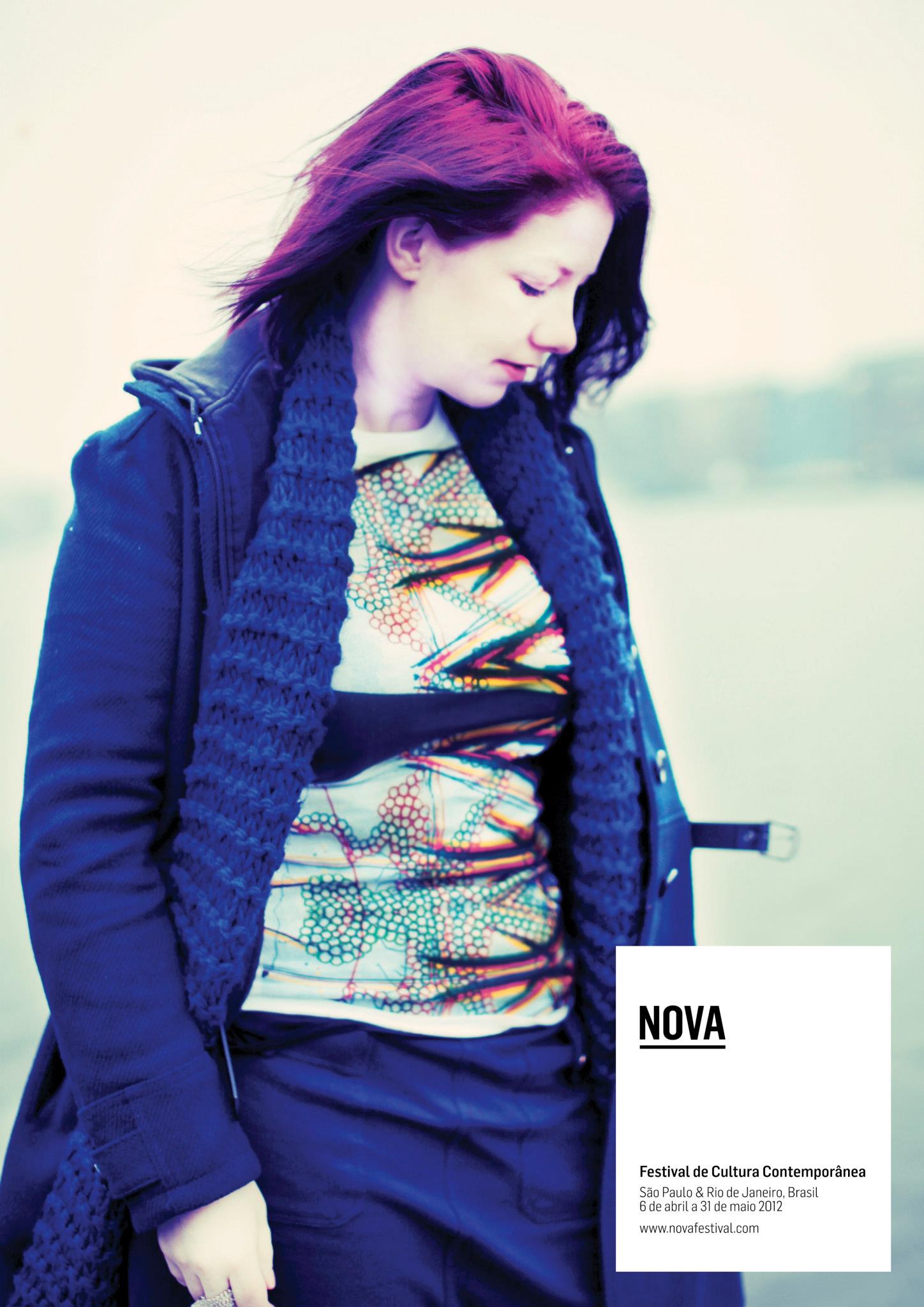
22/4/2012 - Performance: Nova 2012, Auditório MIS – 19.00h, Sao Paolo, Brasil.
Sóley (Islândia) – música
Nils Frahm (Alemanha) – música
Rosa Menkman (Holanda) – video
3/14/2012
Unravelling Time: travelling towards a "new-timond age"
Sonic Acts is finished and I had a really wonderful experience. Beforehand, I expected the festival to give a broad and deep outline on its theme, which was this year 'time'. During the festival, I tried to get a grip on this complex theme. But as in any major, heavily programmed festival, my own perception of time has been .. shrunken, stretched and bended.. or maybe just quite confused. Besides that I have never philosophized or conceptualized time before. So while I am trying to come to terms with time, it seems to slip away as an eel (water?) through my fingers, moving in all kinds of ways except into a finished framework that lets itself be pin-pointed or written down. Of course this could already lead me to conclude the very nature of time; its slippery, elusive and trickery. It becomes more and more clear to me that time can be described not just as rhythmical or techno-linear (a timeline of past, present and future), but that time can evolve through many more qualitative conceptualizations and descriptions. So how do we describe time and how can time be used?
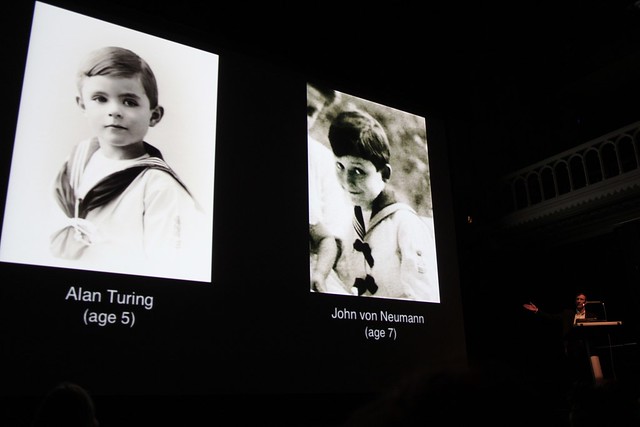
The opening keynote by George Dyson took me from Alan Turings research into computation to the development of the ENIAC computer, onto a mostly linear, historical path full of personal anecdotes of Dysons experiences as a child, navigating the Institute for Advanced Study, at Fuld Hall, Princeton. An institute where, amongst other leading philosophers and mathematicians, his father, Freeman Dyson, was dedicated too master the computations involved in building 'the perfect' hydrogen bomb. As a little boy, Dyson stumbled through this Hall, from room to room, to play with the famous mathematicians and philosophers, who were working on these computations.
While Dysons narration takes place on a very human and often personal level, he also leaves certain arbitrary elements of his (pre-)histories out: he ignores important themes like the roles of women during the development of the ENIAC and leaves the story of Turings sexual orientation completely out. However, these quite obvious gabs of historical narration can be explained by Dysons final reasoning about time. Dyson navigates the lines of his experiences and combines them with back-traced sequences of historical research to finally argue that with the move from linear time to computational time, sequential time as clocked by the computer-clock has become independent of time. Dyson concludes that "the sequence has no time".
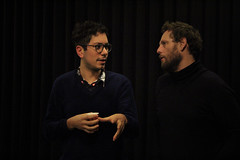

Another way of organizing time came up during the master class of Olaf Nicolai. Nicolai follows Žižeks statement that "the repetition is not the same as the return". He employs Kierkegaards 3-fold model of time; a triad that is formed by esthetic, ethic and religious time (which is analogous to Lacans imaginary, symbolic and real order). In this model, esthetic or imaginary time is based on a nostalgic, enchanting perception of time; the way we think or capture time through for instance nostalgic, dead objects. Ethic, symbolic time should be understood as a standard, set by "the institute", for instance through the naming of a certain period. Finally dramatic or religious time is the most interesting conceptualization of time. Dramatic time comes closest to what Lacan would call "the real" dimension, or Deleuzes "virtual time" (to Deleuze, the virtual dimension of an historical happening was something absolutely real, for example, the October Revolution and its utopian potential for freedom was a not to disregard). Real time, the dimension of experienced time is the most authentic, but also the order of time that is impossible to describe; when I try to capture it in language I will just create a bigger distance from "the real".
Nicolai clarifies and conceptualizes the notion of real time by focussing on one of its many subfolds, the "repetition". Every time I quote or repeat, I actually reposition the action into a new context (involving a past and a possible future perspective). As time moves, the repetition will evolve within this context, because the history around the repetition will evolve and directly transform the object. A repetition will thus never be the same (a return of the object), which makes pure repetition impossible. Following from this, Žižek even goes as far as to state that repetition is synonymous to revolution.
As an example Nicolai shows his 30 hour performance work 'the Innere Stimme', which is based on ‘Humoreske’ Opus 20 for the piano, composed in 1893 by Robert Schumann. In his composition, Schumann added a third compositional clef, the 'Innere Stimme', in-between the staff notations for the left and the right hand. Because the piece is written as a piano solo, the melody of the Innere Stimme cannot be played. The Innere Stimme are the lines in-between, that will influence the interpretation of the left hand and the right hand. In Nicolais adaptation of Schumann, he crossed out the left and the right hand staff, instructing a group of performers to recite the Innere Stimme through humming, for 30 consecutive hours. The hidden composition is recited and changes per iteration; its interpretation is never the same, its evolution is the translation in real time.
In alignment with Nicolai, Pauline Oliveros suggests to understand the concept of "now time" in relation to delay, connected to systems of feedback and resonance. She explains that when a sound reaches our ears, it takes a while before the signal is transduced. Only after this reception, you can go into the process of listening. So hearing (a certain vibration) is not the same as listening (which is done by the brain and depends on experience). She concludes that reality exists only as a delay time, in the in-between. Oliveros uses the concept of in-between in her artistic practice of deep-listening.

On a different level, Juliana Borinski plays with the audiences techno-conventions of time in her time-trickery work Liquid Crystal Display (2008-2009). In this expanded cinema installation a few drops of a crystalline solution are placed on an empty slide in a customized projector. The crystallization process and all its associated movements are projected live. Using the projector’s heat, the reaction-time varies from twenty minutes to a few hours depending on the solution’s concentration and the temperature and humidity in the exhibition space. Each slide is replaced after the ‘image’ has stabilized. By using an old technology like a slide projector, and the slow process of crystallization, Borinski tricks the audience into following the conventions of time connected to the medium; when the slide doesn't change, nothing will change, while in fact, if the audience would stay and wait, a quite drastic evolution will take place. If the audience is to return to the installation, it will realize that it missed some "magical moment", his expectation of the slide to be static is overturned, because in fact the slide changed over time. This could make the audience aware of his governing conventions of behavior of the medium through time.

Both Nicolai and Borinski fracture the concept of predictability over time. A similar distortion in conventional time deployment is also theorized by Siegfried Zielinski, who urges his audience to move away from the conventional concept of linear time. As Deleuze already wrote, we have learned to dance on the plateaus of time. Zielinski states that these plateaus are very slippery, which is why we need vertical movement. If we would have too much (linear) horizontal momentum we would slip and run out of time, or escape time (which is in psychoanalyses described as the paranoid mode), while if we are too deeply invested in time (vertical momentum), we are not able to forget, which will invoke states of melancholia and depression. There is a need for an elegant way of traveling through time. Which can, according to Zielinski, be done by traveling around the joint of vertical and horizontal time, in a circular movement. This circular movement can be understood as a cycle, that however doesn't involve repetition. In alignment with both Nicolai and Oliveros, Zielinski recites Alvin Luciers' "I am sitting in a room" (1969), stating that repetition is always a reinterpretation of history. Time could best be understood as a spiraling cycle, moving around a joint. But this is not where Zielinski concludes his talk; Zielinski set out to describe time as a coiled, jointed spring, that can be let loose until it becomes, for a moment, a straight line.
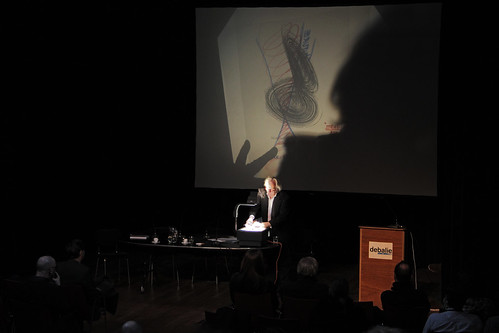
While Zielinski got more into details about coiled spirals, snapped cycles and time capsules, my brain started spiraling into its own depths. My thoughts started to get stretchy and leggy and from my notes I can only make up some questions: If the tipping point of the snapped coiled spring is the point where everything flattens, voids and unfurls, is this then the point where I am no longer limited to my own timeline; is this the point where I can traverse timelines? Is this how I am to understand the traveling of time; to unfold myself onto the moment/um, where I can choose, at once to change my timeline of operation. Is this the point (the 'now'), where time is for a moment a straight line, inside the vortex, the moment where I can choose my own contingency (my own future and my own past)?
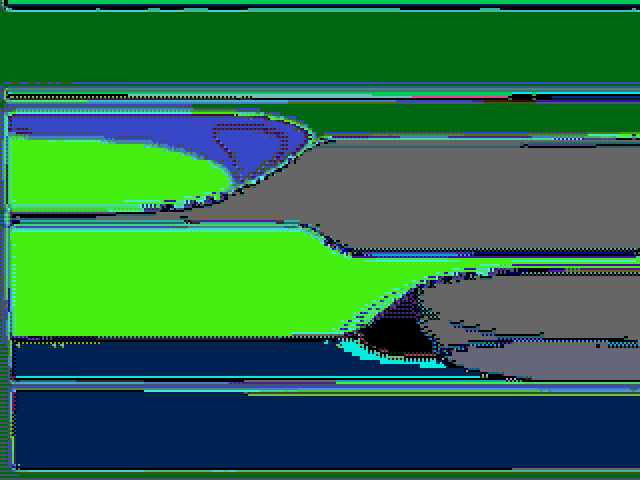
Before Sonic Acts really started, I attended the master class by CC Hennix, in which the 64 year old philosopher, scientist and minimal drone-composer set out to describe the reasonings behind her compositions. One of Hennix most important statements was that while today, time is a dominant parameter in our daily experiences (of space and for instance sound), its formalisms are actually imposed onto us. Time is not universally the same; as an example, she described Indian rāga music of Nada Yoga which has no clear beginning or ending.
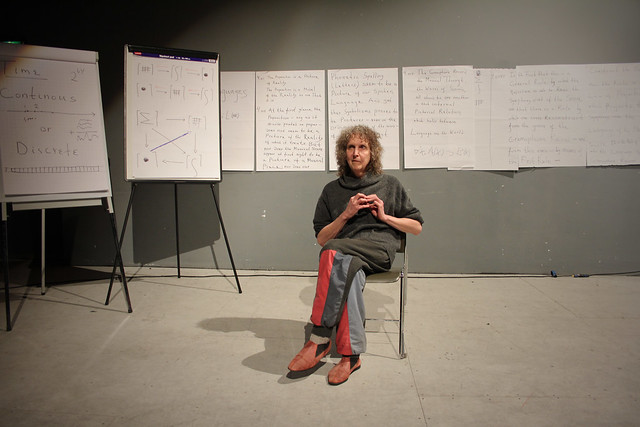
During Hennix masterclass I learned about her usage of time through sound. With the help of a composition of stationary sound waves (sinus waves), Hennix uses a method of time stretching that gives the ear (and the body) the possibility to get used to a specific harmonics. As the ear and the brain become attuned to the sound, the ways of listening changes; just as my eyes will become accustomed to a dark room and finally will make it possible to make out certain forms again, the ear will also become tuned to the sound and make it possible for me to re-listen. Finally, I will be able to change the sound by the way I let my mind "operate my ear" (I will become more aware of the operators of reception, the ears, for which I then will be able to change its function). After a while, the listener will learn to tune its ear to hear specific frequencies, to favorite certain sine waves over others.
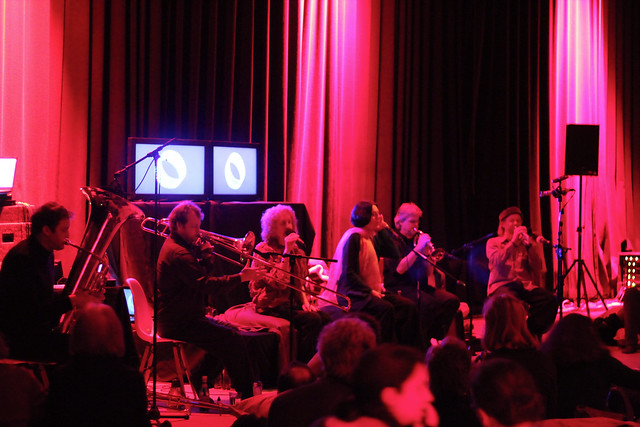
At the end of Sonic Acts, I was finally able to attend Hennix concert, which was in collaboration with The Choras(s)an Time-Court Mirage and took place in the Smart Project Space. The attendance was restricted to a limited amount of people, who had to take of their shoes before entering the in incense submerged, dimly red-lid room. I chose a cushion on the side of the stage on which Hennix and her collaborators were already flowing out their sine waves.
I am not a tranquil person, I am always busy, always asking questions, always in charge of my own time. But after 7 days of intense festival, I was able to give in to the 100 minutes of minimal drone. I did not sleep (next to me a man fell asleep and I had to wake him up when he started snoring). I was sort of in a stage between feeling and thinking about what I had learned the whole week on a very slow pace, which was a nice experience. But what was the most interesting to me was how I felt when I came out the drone shower. I was not tired, nor energized, I just was … and going on the flow of what the time had to offer…
For once I just lived time as I actively felt it slip, going on its flow and with what it had to offer.
The artists and theorists I saw and met during Sonic Acts showed and taught some of the many different uses of the concept of time, whether time being regulatory (in this case we can think in procedural terms: time follows certain 'functions' and is rhythmic) or socially frameworked (here it becomes relative). Time is always here, it just depends on how I focus on it, through what lens I for instance "hear" or "see" it.
I can describe time not in just one specific way. While everything can be described as 'organized by time', I think what this means is still a choice of perspective. I let time play a shaping function in everything I can think of; and I often need a concept of time to understand a phenomenon or an object, if only to understand its liminalities. I can only understand my future perspectives through incorporating my past experience. Time can and is organized following different arrangements depending on the lens or framework chosen.
Time has become more and more valuable. As it slips away I am trying to encapsulate its instances and my experiences that would otherwise leave me as immaterial and volatile fleeting instances. But time is quite possibly the hardest material to bound.
A thought very beautifully captured in a work by Morgan Highby Flowers called 'TIMONDs Are For Ever'; as a feedback artist Highby Flowers is fracturing and reconfiguring experiences of time; he creates little "ti-monds". A re-visitable vortex bonded by his perspective of choice (in which the past is always shaped the future).
As glitch artists we are all participants in a "new-timond age", in which reflection (on liminalities) are key and the fracturing and de/re-materialization of a moment in time become new valuable objects. (To be broken again?)

The opening keynote by George Dyson took me from Alan Turings research into computation to the development of the ENIAC computer, onto a mostly linear, historical path full of personal anecdotes of Dysons experiences as a child, navigating the Institute for Advanced Study, at Fuld Hall, Princeton. An institute where, amongst other leading philosophers and mathematicians, his father, Freeman Dyson, was dedicated too master the computations involved in building 'the perfect' hydrogen bomb. As a little boy, Dyson stumbled through this Hall, from room to room, to play with the famous mathematicians and philosophers, who were working on these computations.
While Dysons narration takes place on a very human and often personal level, he also leaves certain arbitrary elements of his (pre-)histories out: he ignores important themes like the roles of women during the development of the ENIAC and leaves the story of Turings sexual orientation completely out. However, these quite obvious gabs of historical narration can be explained by Dysons final reasoning about time. Dyson navigates the lines of his experiences and combines them with back-traced sequences of historical research to finally argue that with the move from linear time to computational time, sequential time as clocked by the computer-clock has become independent of time. Dyson concludes that "the sequence has no time".


Another way of organizing time came up during the master class of Olaf Nicolai. Nicolai follows Žižeks statement that "the repetition is not the same as the return". He employs Kierkegaards 3-fold model of time; a triad that is formed by esthetic, ethic and religious time (which is analogous to Lacans imaginary, symbolic and real order). In this model, esthetic or imaginary time is based on a nostalgic, enchanting perception of time; the way we think or capture time through for instance nostalgic, dead objects. Ethic, symbolic time should be understood as a standard, set by "the institute", for instance through the naming of a certain period. Finally dramatic or religious time is the most interesting conceptualization of time. Dramatic time comes closest to what Lacan would call "the real" dimension, or Deleuzes "virtual time" (to Deleuze, the virtual dimension of an historical happening was something absolutely real, for example, the October Revolution and its utopian potential for freedom was a not to disregard). Real time, the dimension of experienced time is the most authentic, but also the order of time that is impossible to describe; when I try to capture it in language I will just create a bigger distance from "the real".
Nicolai clarifies and conceptualizes the notion of real time by focussing on one of its many subfolds, the "repetition". Every time I quote or repeat, I actually reposition the action into a new context (involving a past and a possible future perspective). As time moves, the repetition will evolve within this context, because the history around the repetition will evolve and directly transform the object. A repetition will thus never be the same (a return of the object), which makes pure repetition impossible. Following from this, Žižek even goes as far as to state that repetition is synonymous to revolution.
As an example Nicolai shows his 30 hour performance work 'the Innere Stimme', which is based on ‘Humoreske’ Opus 20 for the piano, composed in 1893 by Robert Schumann. In his composition, Schumann added a third compositional clef, the 'Innere Stimme', in-between the staff notations for the left and the right hand. Because the piece is written as a piano solo, the melody of the Innere Stimme cannot be played. The Innere Stimme are the lines in-between, that will influence the interpretation of the left hand and the right hand. In Nicolais adaptation of Schumann, he crossed out the left and the right hand staff, instructing a group of performers to recite the Innere Stimme through humming, for 30 consecutive hours. The hidden composition is recited and changes per iteration; its interpretation is never the same, its evolution is the translation in real time.
In alignment with Nicolai, Pauline Oliveros suggests to understand the concept of "now time" in relation to delay, connected to systems of feedback and resonance. She explains that when a sound reaches our ears, it takes a while before the signal is transduced. Only after this reception, you can go into the process of listening. So hearing (a certain vibration) is not the same as listening (which is done by the brain and depends on experience). She concludes that reality exists only as a delay time, in the in-between. Oliveros uses the concept of in-between in her artistic practice of deep-listening.

On a different level, Juliana Borinski plays with the audiences techno-conventions of time in her time-trickery work Liquid Crystal Display (2008-2009). In this expanded cinema installation a few drops of a crystalline solution are placed on an empty slide in a customized projector. The crystallization process and all its associated movements are projected live. Using the projector’s heat, the reaction-time varies from twenty minutes to a few hours depending on the solution’s concentration and the temperature and humidity in the exhibition space. Each slide is replaced after the ‘image’ has stabilized. By using an old technology like a slide projector, and the slow process of crystallization, Borinski tricks the audience into following the conventions of time connected to the medium; when the slide doesn't change, nothing will change, while in fact, if the audience would stay and wait, a quite drastic evolution will take place. If the audience is to return to the installation, it will realize that it missed some "magical moment", his expectation of the slide to be static is overturned, because in fact the slide changed over time. This could make the audience aware of his governing conventions of behavior of the medium through time.

Both Nicolai and Borinski fracture the concept of predictability over time. A similar distortion in conventional time deployment is also theorized by Siegfried Zielinski, who urges his audience to move away from the conventional concept of linear time. As Deleuze already wrote, we have learned to dance on the plateaus of time. Zielinski states that these plateaus are very slippery, which is why we need vertical movement. If we would have too much (linear) horizontal momentum we would slip and run out of time, or escape time (which is in psychoanalyses described as the paranoid mode), while if we are too deeply invested in time (vertical momentum), we are not able to forget, which will invoke states of melancholia and depression. There is a need for an elegant way of traveling through time. Which can, according to Zielinski, be done by traveling around the joint of vertical and horizontal time, in a circular movement. This circular movement can be understood as a cycle, that however doesn't involve repetition. In alignment with both Nicolai and Oliveros, Zielinski recites Alvin Luciers' "I am sitting in a room" (1969), stating that repetition is always a reinterpretation of history. Time could best be understood as a spiraling cycle, moving around a joint. But this is not where Zielinski concludes his talk; Zielinski set out to describe time as a coiled, jointed spring, that can be let loose until it becomes, for a moment, a straight line.

While Zielinski got more into details about coiled spirals, snapped cycles and time capsules, my brain started spiraling into its own depths. My thoughts started to get stretchy and leggy and from my notes I can only make up some questions: If the tipping point of the snapped coiled spring is the point where everything flattens, voids and unfurls, is this then the point where I am no longer limited to my own timeline; is this the point where I can traverse timelines? Is this how I am to understand the traveling of time; to unfold myself onto the moment/um, where I can choose, at once to change my timeline of operation. Is this the point (the 'now'), where time is for a moment a straight line, inside the vortex, the moment where I can choose my own contingency (my own future and my own past)?

Before Sonic Acts really started, I attended the master class by CC Hennix, in which the 64 year old philosopher, scientist and minimal drone-composer set out to describe the reasonings behind her compositions. One of Hennix most important statements was that while today, time is a dominant parameter in our daily experiences (of space and for instance sound), its formalisms are actually imposed onto us. Time is not universally the same; as an example, she described Indian rāga music of Nada Yoga which has no clear beginning or ending.

During Hennix masterclass I learned about her usage of time through sound. With the help of a composition of stationary sound waves (sinus waves), Hennix uses a method of time stretching that gives the ear (and the body) the possibility to get used to a specific harmonics. As the ear and the brain become attuned to the sound, the ways of listening changes; just as my eyes will become accustomed to a dark room and finally will make it possible to make out certain forms again, the ear will also become tuned to the sound and make it possible for me to re-listen. Finally, I will be able to change the sound by the way I let my mind "operate my ear" (I will become more aware of the operators of reception, the ears, for which I then will be able to change its function). After a while, the listener will learn to tune its ear to hear specific frequencies, to favorite certain sine waves over others.

At the end of Sonic Acts, I was finally able to attend Hennix concert, which was in collaboration with The Choras(s)an Time-Court Mirage and took place in the Smart Project Space. The attendance was restricted to a limited amount of people, who had to take of their shoes before entering the in incense submerged, dimly red-lid room. I chose a cushion on the side of the stage on which Hennix and her collaborators were already flowing out their sine waves.
I am not a tranquil person, I am always busy, always asking questions, always in charge of my own time. But after 7 days of intense festival, I was able to give in to the 100 minutes of minimal drone. I did not sleep (next to me a man fell asleep and I had to wake him up when he started snoring). I was sort of in a stage between feeling and thinking about what I had learned the whole week on a very slow pace, which was a nice experience. But what was the most interesting to me was how I felt when I came out the drone shower. I was not tired, nor energized, I just was … and going on the flow of what the time had to offer…
For once I just lived time as I actively felt it slip, going on its flow and with what it had to offer.
The artists and theorists I saw and met during Sonic Acts showed and taught some of the many different uses of the concept of time, whether time being regulatory (in this case we can think in procedural terms: time follows certain 'functions' and is rhythmic) or socially frameworked (here it becomes relative). Time is always here, it just depends on how I focus on it, through what lens I for instance "hear" or "see" it.
I can describe time not in just one specific way. While everything can be described as 'organized by time', I think what this means is still a choice of perspective. I let time play a shaping function in everything I can think of; and I often need a concept of time to understand a phenomenon or an object, if only to understand its liminalities. I can only understand my future perspectives through incorporating my past experience. Time can and is organized following different arrangements depending on the lens or framework chosen.
Time has become more and more valuable. As it slips away I am trying to encapsulate its instances and my experiences that would otherwise leave me as immaterial and volatile fleeting instances. But time is quite possibly the hardest material to bound.
A thought very beautifully captured in a work by Morgan Highby Flowers called 'TIMONDs Are For Ever'; as a feedback artist Highby Flowers is fracturing and reconfiguring experiences of time; he creates little "ti-monds". A re-visitable vortex bonded by his perspective of choice (in which the past is always shaped the future).
As glitch artists we are all participants in a "new-timond age", in which reflection (on liminalities) are key and the fracturing and de/re-materialization of a moment in time become new valuable objects. (To be broken again?)
3/13/2012
3/12/2012
//Upcoming Gigs
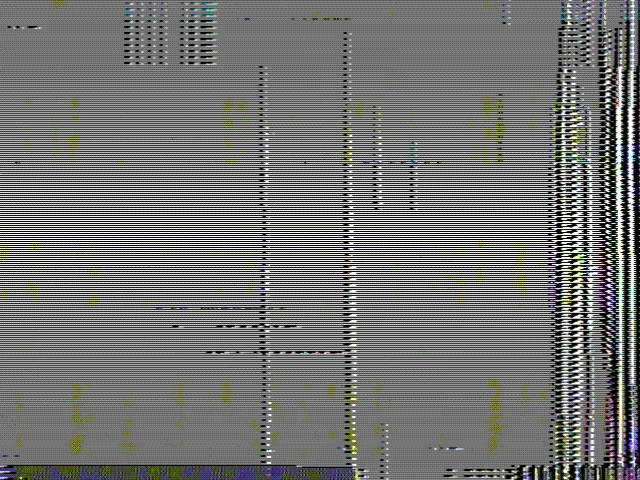
21/06/2012 - Exhibition / performance CBK, Amsterdam, NL.
21-25/5/2012 - Teaching at Mertzakademie, Stuttgart, DE.
19/05/2012 - Visual Set, VIA, Pittsburg, US.
30-4/05/2012 - Workshop (et.al) (w/ Kim Asendorf), Click Festival, Helsingør, DNK.
21-22/4/2012 - Exhibition: Facing Pages Festival, Arnhem, NL.
22/04/2012 - Performance: ®Nova, MIS, Sao Paolo, BR.
31/03/2012 - TBC Visual set for Motel Aurora Nieuwe Anita.
30/03/2012 - Visual set for Knalpot Sonic Connections, Brakke Grond. Ams, NL.
28/03/2012 - Visual set for Knalpot OT301. Ams. NL.
16/03/2012 - Screening: Female in March. Animal Social Club, Rome, IT.
21-25/5/2012 - Teaching at Mertzakademie, Stuttgart, DE.
19/05/2012 - Visual Set, VIA, Pittsburg, US.
30-4/05/2012 - Workshop (et.al) (w/ Kim Asendorf), Click Festival, Helsingør, DNK.
21-22/4/2012 - Exhibition: Facing Pages Festival, Arnhem, NL.
22/04/2012 - Performance: ®Nova, MIS, Sao Paolo, BR.
31/03/2012 - TBC Visual set for Motel Aurora Nieuwe Anita.
30/03/2012 - Visual set for Knalpot Sonic Connections, Brakke Grond. Ams, NL.
28/03/2012 - Visual set for Knalpot OT301. Ams. NL.
16/03/2012 - Screening: Female in March. Animal Social Club, Rome, IT.
3/10/2012
Knife City new release cover design.
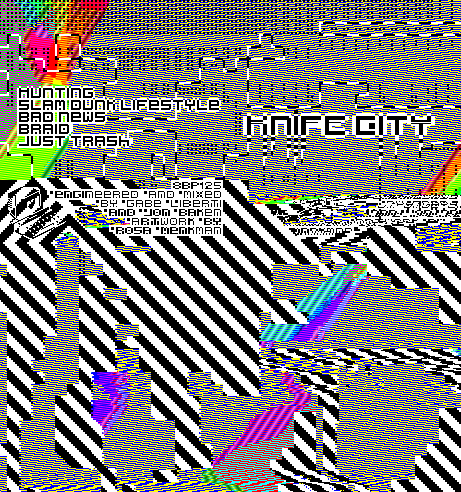
Knife City Cover Art by Rosa Menkman,
this is the first legitimate release from luke silas as knife city. he makes loud dance music using game boys, and loves to play it live for you. buy him a drink if you go to a show. plz&thx! °•.˛♥˛.•°
Cover art by Rosa Menkman
www.8bitpeoples.com/discography/8BP125
▚ ▛▙◉◉ ▚▛▙◉◉▚▛▙◉◉ ▚▛▙◉◉ ▚▛▙◉◉▚▛▙◉◉
Subscribe to:
Comments (Atom)


